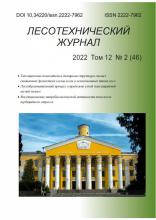Voronezh, Voronezh, Russian Federation
Voronezh, Voronezh, Russian Federation
Voronezh, Voronezh, Russian Federation
The article discusses aspects of building a database of information system "Modeling of the influence of traffic flow on the emissions of polluting substances in atmospheric air of Voronezh". The database is realized with the help of technical means of dynamic information model of the territory, reflecting spatial and temporal structure, condition, and relationship between the individual elements of the simulated ecosystem. The presence of baseline information on the environmental parameters characterizing the components included in the atmospheric air, allows to provide ecologists with the results of processing of experimental data and give recommendations for elimination of emissions of polluting substances by motor automobile transport into atmosphere. The reporting database is a set of relational tables in MySQL database format, where each individual observation (measurement or setting of abundance of the pollutant in a particular sample of atmospheric air) is informationally associated with specification of location coordinates and characteristics of sampling sites (geographical aspect), as well as the date of expedition (time aspect). A generalized information model of the database consists of the following tables: information about the streets and districts of the city; the original data on the different types of transport and intensity of their movement in different parts of the city; output of pollutants: substance, mass, and concentration on certain streets and districts of the city; constant data about automotive pollutants (CH,SO,Pb, and others); other constant data, which are necessary for correct operation of the information system. The relevance of this topic is explained by increasing number of motor vehicles in the city of Voronezh and the solution to the problem of its impact on the quality of urban environment and public health.
information system, fields, tables.
Оценка экологического состояния окружающей среды предполагает наличие исходной информации о параметрах, ее характеризующих и наличие адекватных методов оценивания. Автоматизация мониторинга концентрации автомобильных выбросов по территории города позволяет обеспечить экологов результатами обработки экспериментальных данных, сделать правильные выводы и дать рекомендации по устранению или уменьшению выбросов загрязняющих веществ в атмосферу. Это соответствует двум стадиям, на которые условно можно разбить процессы использования информации: сбор и хранение, обработка и принятие решений.
1. Yudina, N.Yu., N.W. Khalzev Sozdaniye informatsionnoy sistemy «Monitoring kontsentratsii vybrosov zagryaznyayushchikh veshchestv avtotransportnykh sredstv v ekosistemakh [Creation of the information system "Monitoring the concentration of emissions of vehicle pollutants in ecosystems"] Actual directions of scientific research of the XXI century: theory and practice. 2015. T. 3. No. 7-3 (18-3). Pp. 132-136 (In Russian)
2. Kompleks programm dlya avtomatizatsii atmosferookhrannoy deyatel'nosti "ATMOSFERA-PDV" [The complex of programs for automation of atmospheric security activity "ATMOSPHERE-PDV"] Access mode://http://logosoft.ru/prog/eco_atm/about.htm (date of the application: 15.08.2016).
3. Avtomatizirovannaya sistema sbora i analiza ekologicheskoy informatsii o zagryaznenii atmosfernogo vozdukha/ A.A. Goryunkova [i dr.]// Vestnik komp'yuternykh i informatsionnykh tekhnologiy. 2013. № 1. S. 9-11. EDN: https://elibrary.ru/PYBJQJ
4. Kropotov Yu.A., Suvorova GP Markov models in the automated system for monitoring and forecasting the ecological state of the industrial zone. // Proceedings of Orel State Technical University. Series "Information Systems and Technologies". 2008. No. 1-3 / 269 (544). Pp. 113-118.
5. Donchenko V.K. Ecometry: a system-analytical method for environmental and economic assessment and prediction of the potential hazard of man-made impacts on the natural environment. Engineering ecology. 1996. № 3. P.45-61.
6. Bizikin A.V. Principles of constructing an automated system of environmental monitoring for emissions of harmful substances. Ecologically sustainable development of the central federal district: Dokl. Scientific-practical. Forum / under the total. Ed. Doctor of technical sciences, prof. V.M. Panarina, Tula: Publishing House of Tula State University, 2008. S. 173-182.
7. Heatwole H. The concept of the econe, a fundamental ecological unit // Trop. Ecol. 1989. V. 30. № 1. R. 13- 19.
8. Canter L.W. Environmental Impact Assessment. 2nd Ed. - NY.: McGraw-Hill, 1996. - 587 p.
9. Poroikov V.V., Filimonov D.A., Borodina Yu.V. et al. Robustness of Biological Activity Spectra Predicting by Computer Programm PASS for Noncongenetic Sets of Chemical Compounds // J. Chem. Inform. Comput. Sci. 2000. V. 40. № 6. P. 1349. DOI: https://doi.org/10.1021/ci000383k; EDN: https://elibrary.ru/LGCASH
10. Ekaterina M.Lavrischeva. Assemblling Paradigms of Programming in Software Engineering. Journal of Software Engineering and Applications, 2016, 9, 296-317












